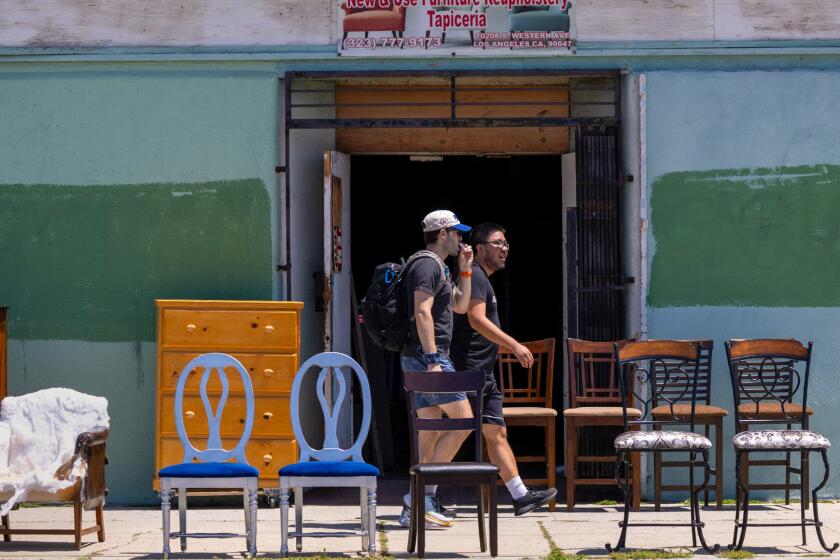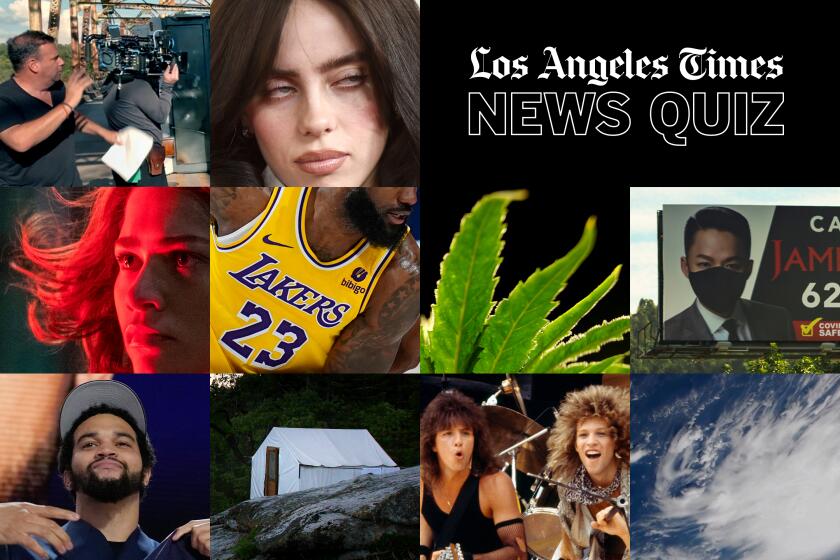Why L.A.’s bat man needs your help
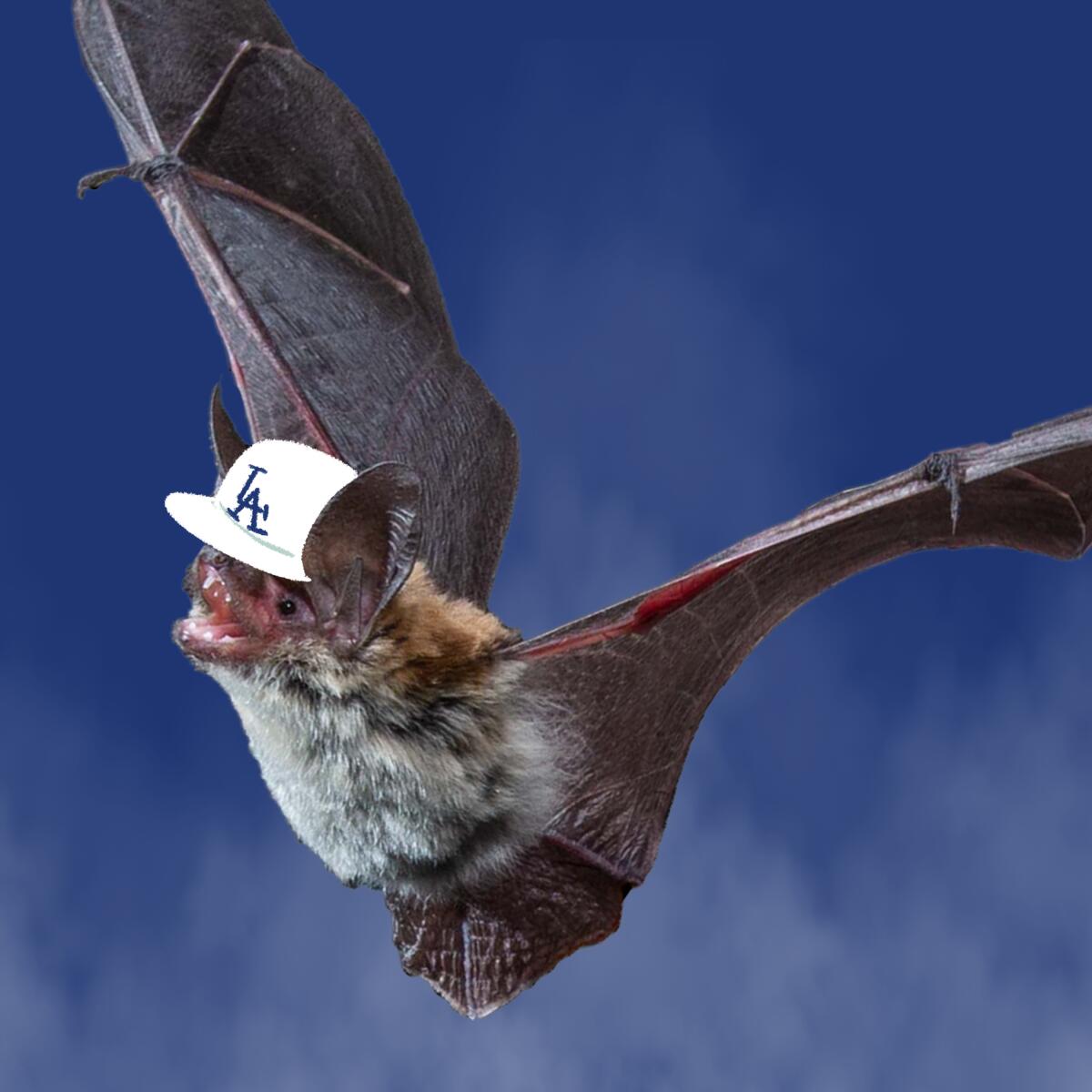
By Mary Forgione
Design and illustrations by Micah Fluellen
For the record:
4:07 p.m. Oct. 8, 2020The story has corrected to say the Backyard Bat Survey has been around four years, not eight years as a prior version said. Also acoustic monitoring at libraries was not a part of the original survey but will begin soon. The museum uses the term “community science instead of citizen science because it is a more inclusive term,” Miguel Ordeñana wrote in an email.
Sign up here to get The Wild sent weekly to your inbox.
Miguel Ordeñana is here to tell you that bats like Los Angeles’ gritty side. The community science manager at L.A.’s Natural History Museum has found more than 40 places in the city where bats hang out. Previously, scientists studied bats in wilder places outside the city.
As part of the ongoing Backyard Bat Survey that began four years ago, Ordeñana looked to the San Fernando Valley, Carson, Watts, South L.A. and other understudied places, with good results. He gathered data by acoustic monitoring (placing microphones and recording equipment in backyards and atop schools) to record the bats living near our city streets. Each type of bat has a distinctive call, the most common being the Mexican free-tailed bat native to the area.
Other species that live here or migrate through include brown bats, Western mastiff bats and Western red bats with orange-reddish heads, found in the museum’s nature garden.
Now Ordeñana wants to expand the survey to find out where bats roost. And he’s hoping you’ll help. With a recent grant from the Disney Conservation Fund, he seeks to engage community scientists to look for where bats live and report back. “People respond to bats because they’re afraid of them, they think they’re gross, or because they love them and find them fascinating and respect their roles in the ecosystem,” he says.
How to get started? Head out at dusk and look for a spot with trees and water, maybe a crevice under a bridge or near the L.A. River, to document where bats emerge. They’re nocturnal and fly out before nightfall. If you see bats, you’re now a data collector.
Ordeñana will have tips on where to go and how to get involved. “There’s a huge need to study bats within L.A.’s urban core,” he says. “They’re really good at keeping the ecosystem healthy. They are consumers of insects like mosquitos and moths and agricultural pests. It’s good to know if they’re around or not.” Find out more at the Backyard Bat Survey website.
3 things to plan this week

1. Founders of Outdoor Afro and the Eden Project talk species extinction in free online event. Rue Mapp grew up in Oakland, the daughter of a Black cowboy from Texas who bought a small ranch in Lake County north of Santa Rosa. While on numerous visits there Mapp learned to hunt, fish and appreciate nature. She started Outdoor Afro in 2009 as a blog. It grew into an organization that has trained hiking leaders, taken thousands on hikes and helped raise the profile of Black people in the outdoors. Join Mapp and Tim Smit of the Eden Project in a discussion about species on the brink of extinction. “Rebelling Against Extinction,” presented by Berggruen Institute and Second Home Hollywood, takes place virtually at 7 p.m. Oct. 13. It’s free to join the conversation; register here. — Brian E. Clark

2. Love or hate off-roading in the California desert? Learn about how it all started. Nothing can appear more empty than the Mojave Desert. Or is it? UC Berkeley doctoral candidate Julia Sizek studies the cultural and biological aspects of the desert as well as the sometimes controversial uses of private and public lands.
Case in point: off-roading in the desert, which began after World War II and continues with vehicles, dirt bikes and ATVs. Sizek will present a virtual lecture, “A History of Off-Roading in the California Desert, 1945-1990,” at 7 p.m. Friday. It costs $5 and is sponsored by the Twentynine Palms Historical Society and the Desert Institute. Sign up here to listen in.
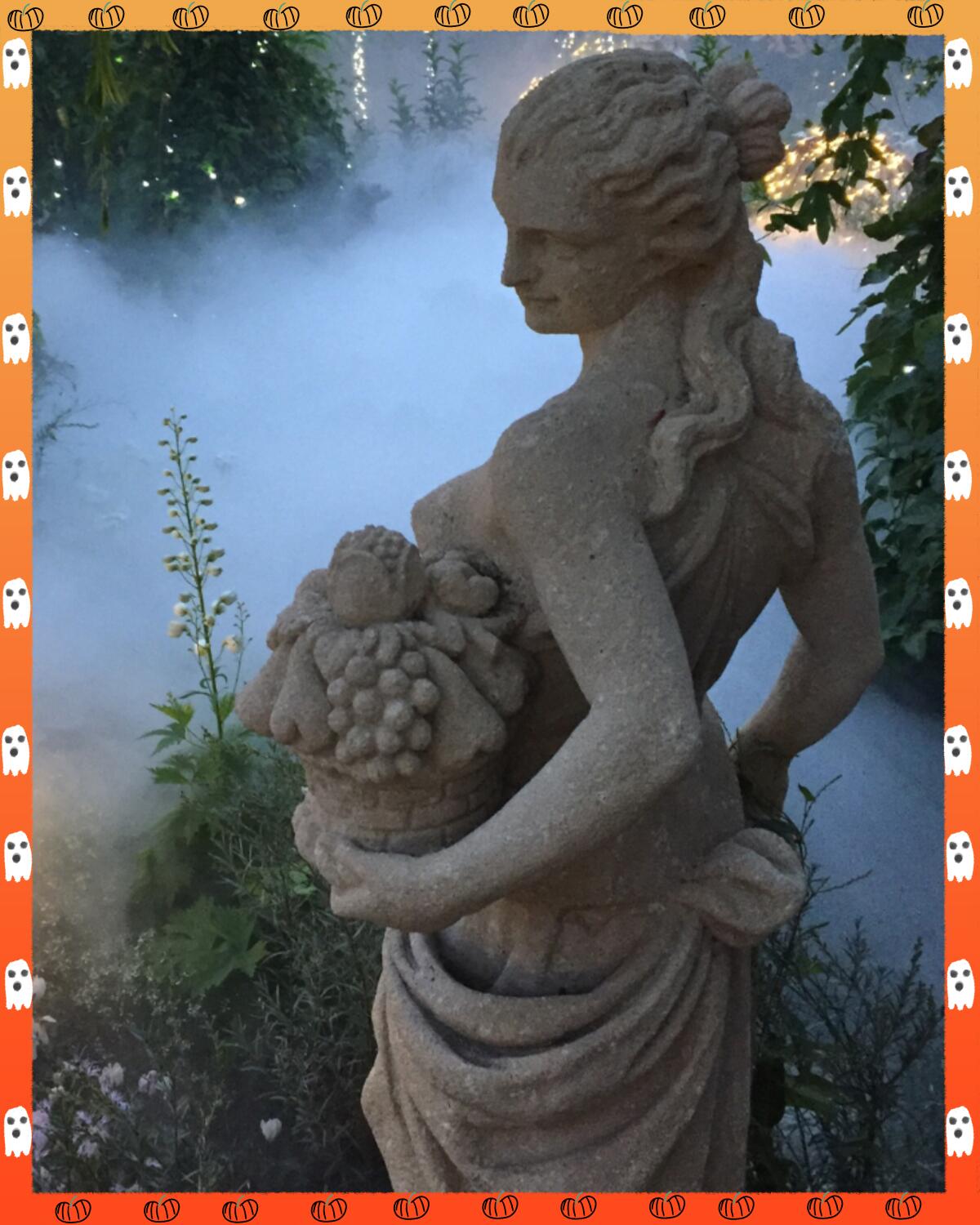
3. Will seeing these garden plants in the dark scare you? Put the pesky pandemic Halloween war aside (“It’s canceled!” “No it isn’t!”) and think about taking a stroll in a dark garden. Sherman Gardens in Corona del Mar will give you a map to see toxic and man-eating plants amid the botanical fare. The garden’s Eerie Evenings will open at timed intervals between 5 and 8 p.m. Oct. 23 and 24. Tickets must be purchased in advance and cost $20 for adults, $5 for children 3 to 17. A portion of the proceeds will be donated to local organizations, including the Santa Ana Zoo. Find more information at thesherman.org.
The red flag
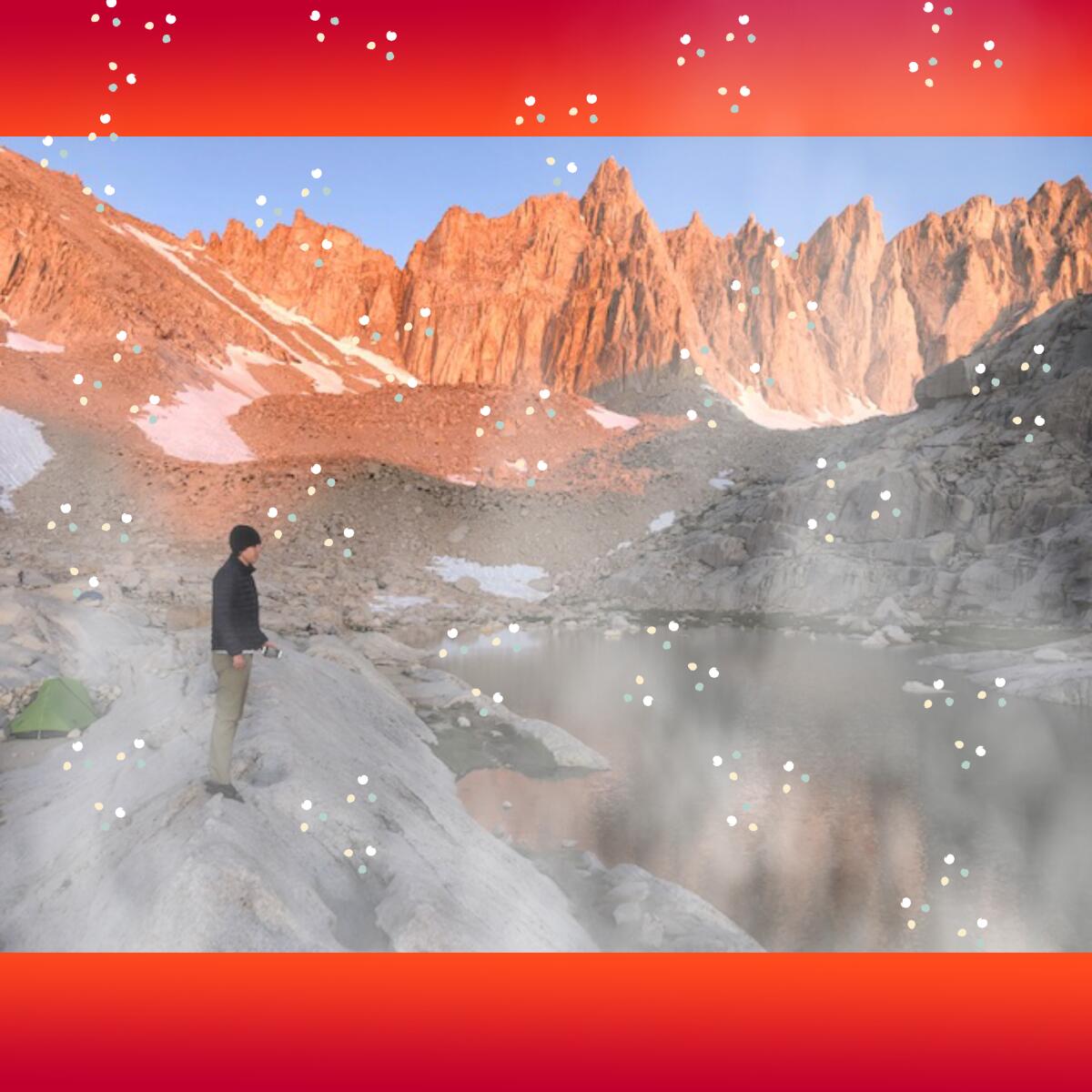
Mt. Whitney and other back-country areas will remain closed until Dec. 1 because of nearby wildfires and poor air quality. Those with $15 permits to hike to the top of the 14,595-foot summit this month should expect to receive a refund from recreation.gov.
The massive Creek, SQF and Rattlesnake fires burning west of the Inyo National Forest, where Mt. Whitney is located, have created smoky skies. “Many of the Inyo’s trail networks lead into active fire areas that are closed and that are managing complex and difficult fires,” the forest’s website says. The closure includes John Muir, Hoover, Ansel Adams and other wilderness areas.
What is open? The Inyo and White mountains as well as the Ancient Bristlecone Pine Forest. Locally, the Angeles, Los Padres and San Bernardino national forests have been closed since Sept. 9 because of fires. Forest officials say they assess conditions on a day-to-day basis.
The sniff test
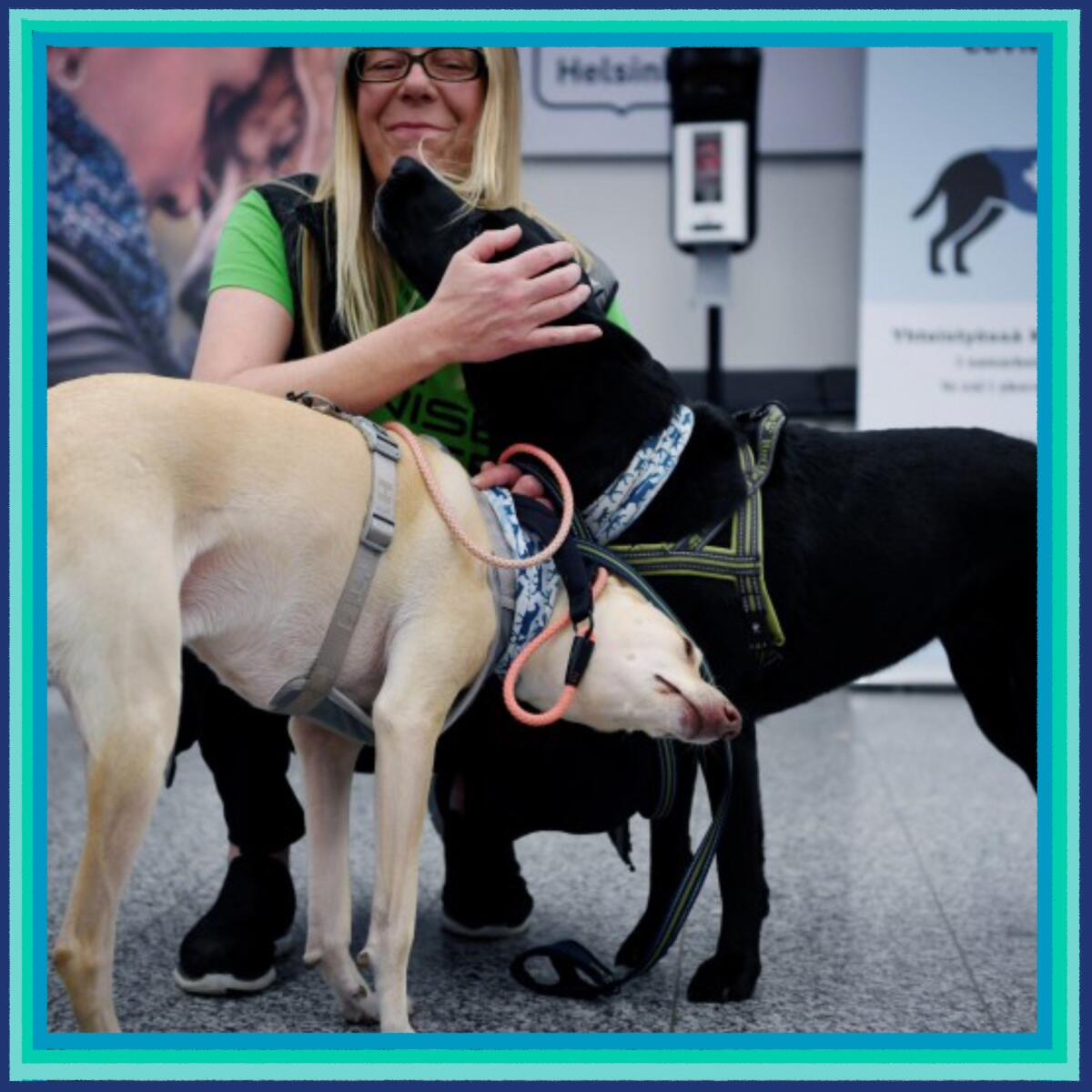
Finland recently started a pilot program that uses sniffer dogs to identify people with the coronavirus. At Helsinki Airport, travelers swipe their skin with a wipe, which is put in a jar and given to the dog, the Associated Press reports. “If the result is positive, the passenger is urged to take a standard coronavirus test to check the dog’s accuracy,” the story says.
Which got me thinking about all the things that dogs sniff out, from drugs and contraband to diabetes and dead bodies. The more I nosed around, the more I found, including a band of canine eco-warriors (my term, not theirs).
Zebra, or quagga, mussels have been taking over California’s freshwater lakes and reservoirs since the 1980s. More than a decade ago, they invaded more parts of the West, including Lake Mead in Nevada.
That’s where the company Mussel Dogs comes in. The pooches sniff out mussels on boats before they hit the water — a key step in trying to beat back the invasion and educate boaters about the dangers of helping the critters spread. Last year, a pack of Mussel Dogs trained to identify the mussels’ microscopic larvae, also known as veligers, at Lake Powell in Glen Canyon National Recreation Area. You can watch the dog detectives at work at musseldogs.info.
Out there
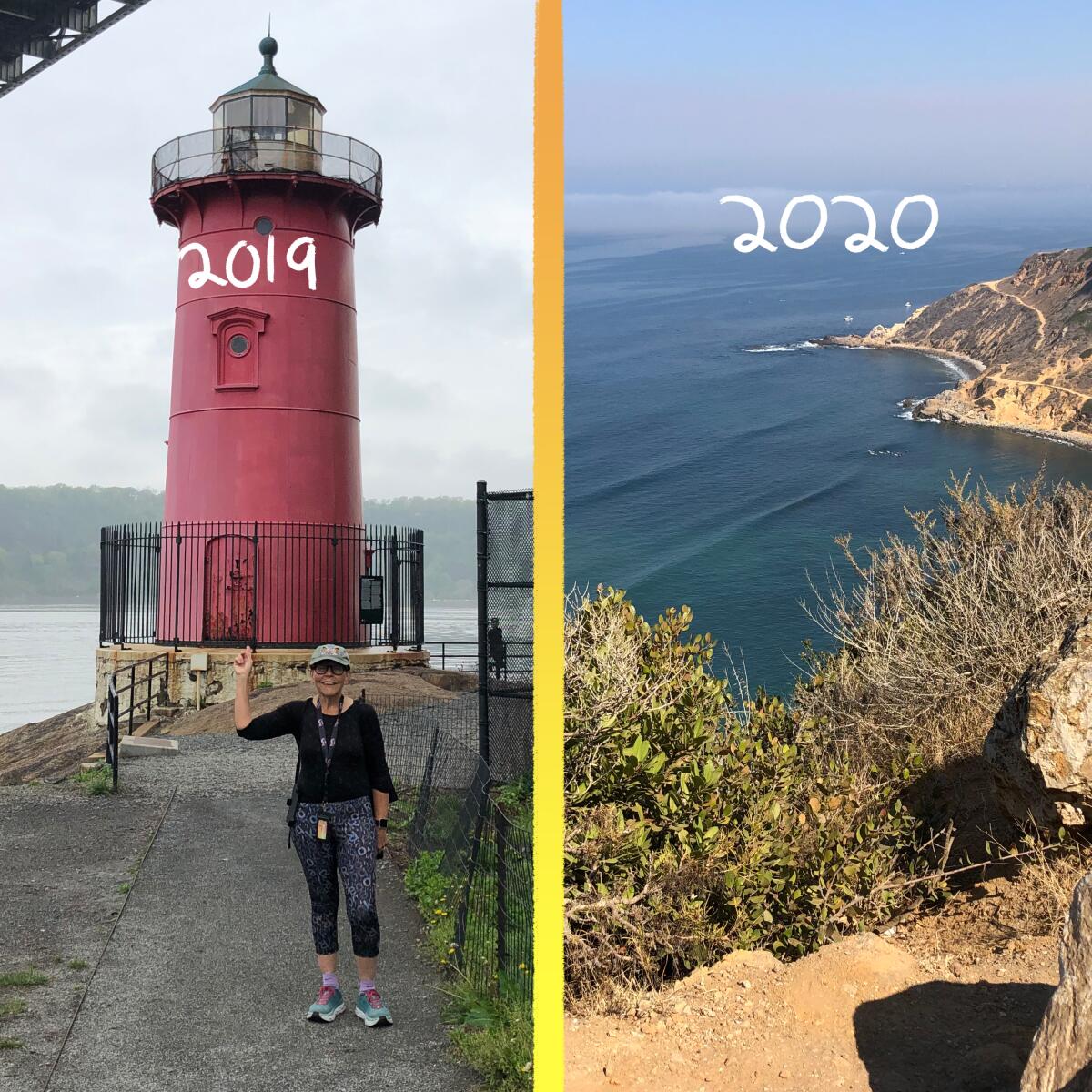
Every May people flock to New York City to walk Manhattan’s 32 miles of urban shoreline. It’s called the Great Saunter, a celebration of a four-decade-long effort to transform derelict docks and neglected areas into an active green walkway around the perimeter of the city. I’ve done it twice and loved it. The Saunter starts in the Battery, heads up the West Wide, turns at the forest at the tip of Manhattan, heads down the East Side and goes under the Brooklyn Bridge. This year, the Saunter was postponed until October and then, because of the COVID-19 pandemic, became a virtual event.
That meant I had to plot my own shoreline course in keeping with the spirit of the walk. It was hard to re-create the momentum of Manhattan. For starters, it was hot — 84 degrees in L.A. (66 degrees in NYC). I started my route with a walk around the Palos Verdes Peninsula, hugging the coast as I ticked off the early miles. At Mile 6, instead of the George Washington Bridge, I stared at the ocean from Abalone Cove in Rancho Palos Verdes. At Mile 13, instead of trekking through Harlem River Park, I sipped iced coffee at Malaga Cove Ranch Market in Palos Verdes Estates. I cut inland through horse country (so as not to repeat my steps) to complete my circular peninsula walk. I was crestfallen when I came up short: only 21 miles.
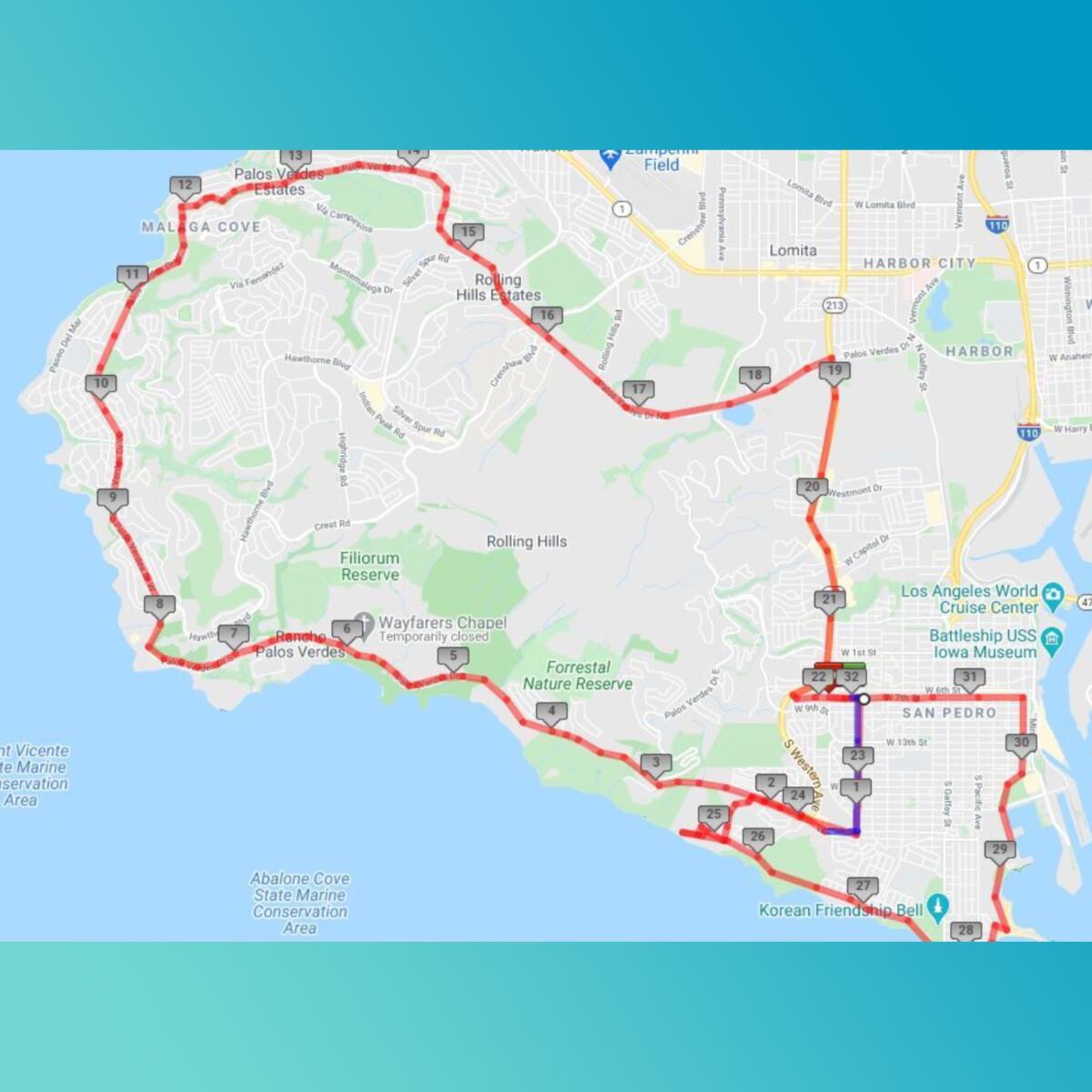
I headed back to L.A.’s shoreline on Anchovy Avenue in San Pedro. Along curving streets and through a hidden gate, I took a dirt trail to a sway-backed picnic table perched above the ocean for a late lunch. I stared at the cliffs below during a rocky low tide; the view was heavenly.
I named my circuitous route the Great Pacific Saunter because, after so many miles and so many hours, the Pacific looked particularly great, even if it wasn’t in New York. I finished by passing the White Point Preserve, the bluffs of Point Fermin, the historic lighthouse, Cabrillo Beach and on to the port. Different coasts, different shorelines, same wondrous feeling that comes from following the water. My Fitbit registered about 80,000 steps and asked me whether I had tracked my moments of mindfulness. Ugh, maybe next year.
The must-read
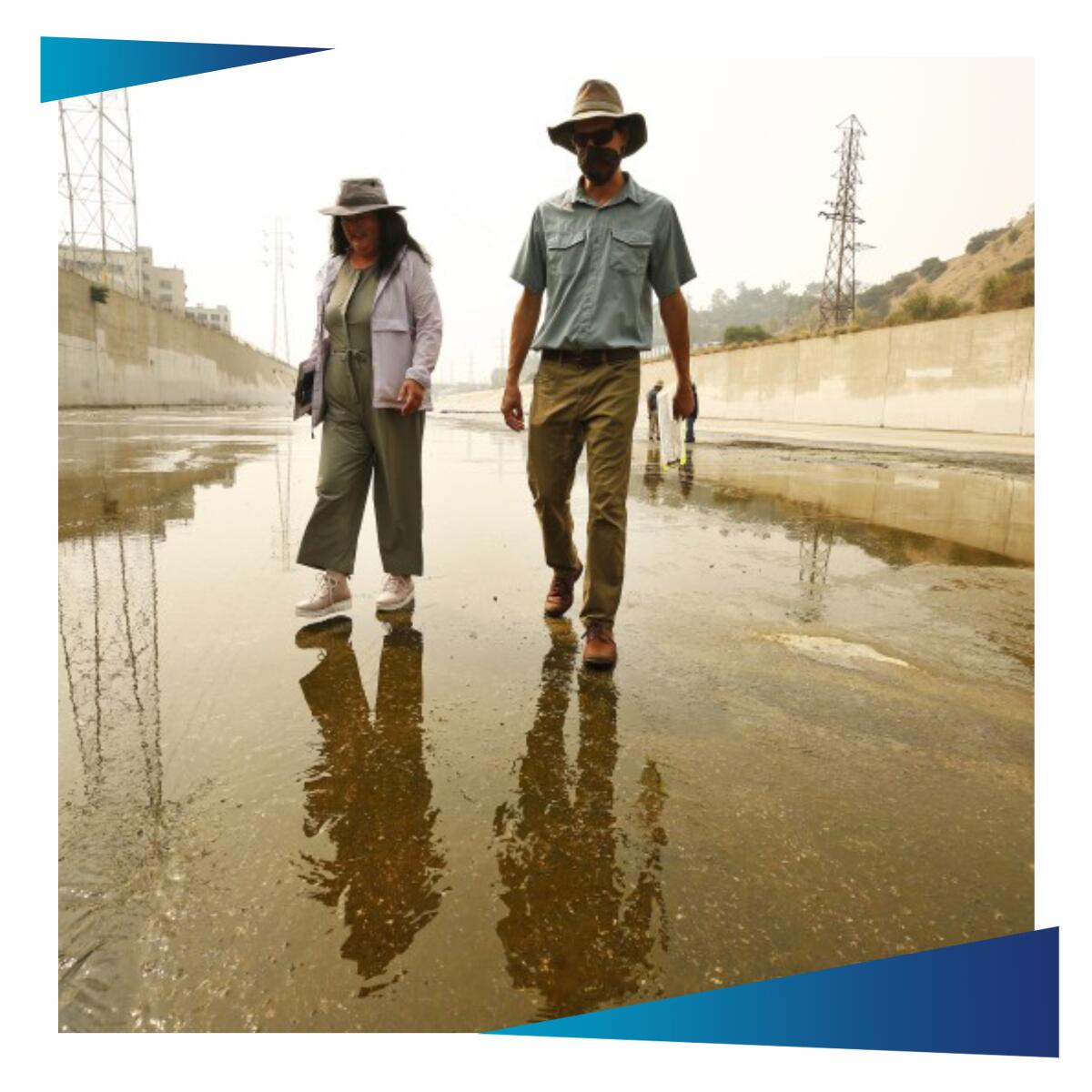
The Los Angeles River — yes, that river, the concrete straitjacket usually flanked by debris — could bring Southern California steelhead trout to their native home. To be clear: These endangered fish didn’t live in a flood channel. “In one of nature’s most theatrical displays, southern steelhead, a species of salmon that grows up to 36 inches in length and 8 pounds, mature in the Pacific Ocean and return to local rivers to spawn again,” my Times colleague Louis Sahagan writes. To get to those rivers, the plan is to re-wild part of the river to create a fish passage for some of the roughly 400 steelhead left on the planet. One obstacle: The speed of the water that flushes to the ocean and the speed of the steelhead are at odds. Still, recovery isn’t impossible. “If all goes smoothly,” said Michael Affeldt, LARiverWorks director in the mayor’s office, “the fish passage project will put some natural heart and soul back into the L.A. River too.” Read the full story here.
Send us your thoughts
Share anything that’s on your mind. The Wild is written for you and delivered to your inbox for free. Drop us a line at TheWild@latimes.com.
Click here to view the web version of this newsletter and share with others. I’m Mary Forgione and I write The Wild. I’ve been exploring trails and open spaces in Southern California for four decades.

Sign up for our L.A. Times Plants newsletter
At the start of each month, get a roundup of upcoming plant-related activities and events in Southern California, along with links to tips and articles you may have missed.
You may occasionally receive promotional content from the Los Angeles Times.

